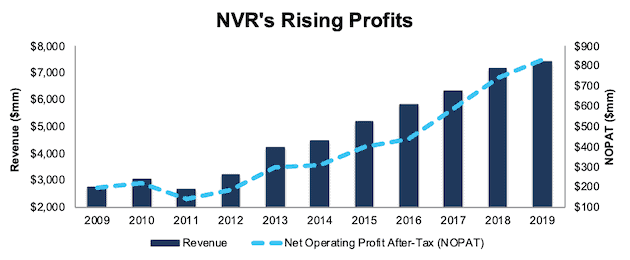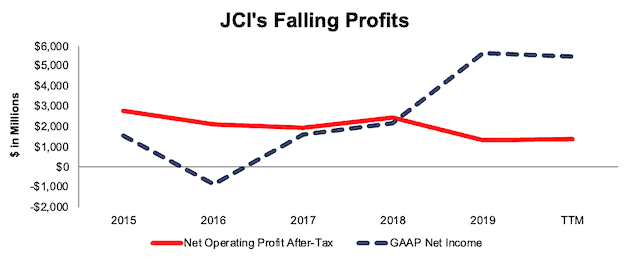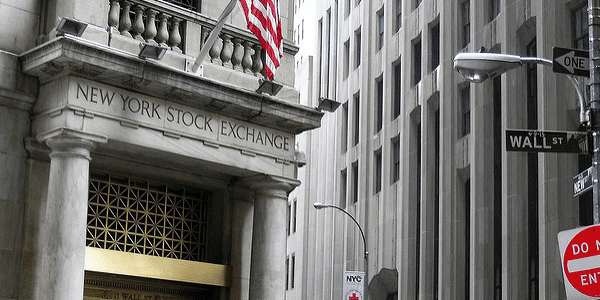Recap from February’s Picks
Our Most Attractive Stocks (-8.9%) underperformed the S&P 500 (-7.6%) from February 6, 2020 through March 2, 2020 by 1.3%. The best performing large cap stock fell -2% and the best performing small cap stock was up 11%. Overall, 12 out of the 33 Most Attractive stocks outperformed the S&P 500.
Our Most Dangerous Stocks (-14.0%) outperformed the S&P 500 (-7.6%) as a short portfolio from February 6, 2020 through March 2, 2020 by 6.4%. The best performing large cap stock fell by 16% and the best performing small cap stock fell by 38%. Overall, 11 out of the 16 Most Dangerous stocks outperformed the S&P 500 as shorts.
The Most Attractive/Most Dangerous Model Portfolios outperformed as an equal-weighted long/short portfolio by 5.1%
Only our research utilizes the superior data and earnings adjustments featured by the HBS & MIT Sloan paper, "Core Earnings: New Data and Evidence.” The successes of these model portfolios highlight the value of our machine learning and AI Robo-Analyst technology[1], which helps clients fulfill the fiduciary duty of care and make smarter investments[2].
30 new stocks make our Most Attractive list this month, and 13 new stocks fall onto the Most Dangerous list this month. March’s Most Attractive and Most Dangerous stocks were made available to members on March 4, 2020.
Our Most Attractive stocks have high and rising returns on invested capital (ROIC) and low price-to-economic book value ratios (PEBV). Most Dangerous stocks have misleading earnings and long growth appreciation periods implied by their market valuations.
Most Attractive Stocks Feature for March: NVR Inc. (NVR: $3,924/share)
NVR Inc. (NVR) is the featured stock from March’s Most Attractive Stocks Model Portfolio.
We first made NVR a Long Idea in April 2017 and featured it again in February 2019. Since our initial report, NVR is up 76% (S&P 500 +24%) and remains undervalued.
NVR has grown after-tax profit (NOPAT) by 22% compounded annually since 2014 and 16% compounded annually over the past decade. NVR’s NOPAT margin increased from 7% in 2009 to 11% in 2019 while its ROIC increased from 24% to 32% over the same time.
Figure 1: NVR’s Revenue & NOPAT Since 2009

Sources: New Constructs, LLC and company filings
NVR’s Valuation Offers Upside Potential
At its current price of $3,924, NVR has a price-to-economic book value (PEBV) ratio of 0.9. This ratio means that the market expects NVR’s NOPAT to permanently decline by 10%. This expectation seems overly pessimistic for a firm that has grown NOPAT by 16% compounded annually over the past decade and 11% compounded annually over the past two decades.
If NVR can maintain its 2019 margin (11%) and grow NOPAT by just 5% compounded annually for the next decade, its shares are worth $6,463/share today – a 65% upside. See the math behind this reverse DCF scenario.
Critical Details Found in Financial Filings by Our Robo-Analyst Technology
As investors focus more on fundamental research, research automation technology is needed to analyze all the critical financial details in financial filings as shown in the Harvard Business School and MIT Sloan paper, "Core Earnings: New Data and Evidence”.
Below are specifics on the adjustments we make based on Robo-Analyst findings in NVR’s 2019 10-K:
Income Statement: we made $110 million of adjustments, with a net effect of removing $50 million in non-operating income (<1% of revenue). You can see all the adjustments made to NVR’s income statement here.
Balance Sheet: we made $2.0 billion of adjustments to calculate invested capital with a net increase of $166 million. One of the largest adjustments was $396 million in cumulative asset write-downs. This adjustment represented 17% of reported net assets. You can see all the adjustments made to NVR’s balance sheet here.
Valuation: we made $2.5 billion of adjustments with a net effect of decreasing shareholder value by $1.1 billion. The largest adjustment to shareholder value was $1.1 billion in outstanding employee stock options (ESO) after tax. This adjustment represents 7% of NVR’s market cap. See all adjustments to NVR’s valuation here.
Most Dangerous Stocks Feature: Johnson Controls International (JCI: $39/share)
Johnson Controls International (JCI) is the featured stock from March’s Most Dangerous Stocks Model Portfolio.
JCI’s NOPAT has declined from $2.8 billion in 2015 to $1.4 billion TTM. Meanwhile, GAAP net income has risen from $1.6 billion in 2015 to $5.5 billion TTM per Figure 2. JCI’s ROIC has fallen from 14% to 4% over the same period while its NOPAT margins declined from 8% in 2018 to 6%TTM.
Figure 2: JCI’s NOPAT & GAAP Net Income Since 2015

Sources: New Constructs, LLC and company filings
JCI Provides Poor Risk/Reward
To justify its current price of $39/share, JCI must achieve NOPAT margins of 7% (6% TTM) and grow NOPAT by 4% compounded annually for the next 14 years. See the math behind this reverse DCF scenario. This scenario assumes JCI grows revenue by consensus estimates for each of the next three years and by 3% each year after. This expectation seems overly optimistic given that JCI’s NOPAT has fallen 17% compounded annually since 2015.
If we optimistically assume JCI can maintain TTM margins of 6% and grow NOPAT 3% compounded annually for a decade (though it has only once grown NOPAT YoY since 2015), JCI is worth $29/share today – a 26% downside. See the math behind this reverse DCF scenario.
Critical Details Found in Financial Filings by Our Robo-Analyst Technology
As investors focus more on fundamental research, research automation technology is needed to analyze all the critical financial details in financial filings as shown in the Harvard Business School and MIT Sloan paper, "Core Earnings: New Data and Evidence”.
Below are specifics on the adjustments we make based on Robo-Analyst findings in Johnson Control International’s 2019 10-K:
Income Statement: we made $6.2 billion of adjustments, with a net effect of removing $4.3 billion in non-operating expenses (18% of revenue). You can see all the adjustments made to JCI’s income statement here.
Balance Sheet: we made $8.3 billion of adjustments to calculate invested capital with a net increase of $3.5 billion. One of the largest adjustments was $1.0 billion due to operating leases. This adjustment represented 3% of reported net assets. You can see all the adjustments made to JCI’s balance sheet here.
Valuation: we made $12.5 billion of adjustments with a net effect of decreasing shareholder value by $10.2 billion. Apart from total debt, the largest adjustment to shareholder value was $1.1 billion in minority interests. This adjustment represents 4% of JCI’s market cap. See all adjustments to JCI’s valuation here.
This article originally published on March 10, 2020.
Disclosure: David Trainer, Kyle Guske II, and Matt Shuler receive no compensation to write about any specific stock, style, or theme.
Follow us on Twitter, Facebook, LinkedIn, and StockTwits for real-time alerts on all our research.
[1] Harvard Business School features the powerful impact of our research automation technology in the case New Constructs: Disrupting Fundamental Analysis with Robo-Analysts.
[2] This paper compares our analytics on a mega cap company to Bloomberg and Capital IQ (SPGI) in a detailed appendix.
